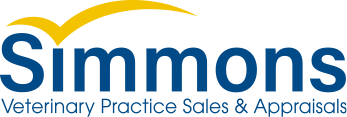It’s tough out there for today’s veterinary practice buyers. A few new investors or corporate consolidators call every year looking to spend way too much money on 2+ doctor practices. So how can you — the young, ambitious associate — compete for 2+ doctor practices? You can’t unless you get lucky enough to find a seller morally opposed to corporate veterinary medicine or who likes you well enough to give up on $500K to $1M.
Thankfully, there’s another way. If you’re willing to live in a smaller town, you could walk into stunning cash flow with little competition from other buyers. Alternatively, if you start thinking like an investor and find a poorly performing practice with the right tools, you can build it into your dream practice. The marketplace is flooded with these practices, and the owners would love to find a buyer like you. Here we focus on buying the under-performing practice and give you some tools to spot and fix the most common drain on practice profits to help you land a fixer-upper with real upside potential.
Buying a Fixer-Upper
Practices with low gross or profitability hold a wealth of opportunity if you know what to look for and are willing to put in the work and follow through to correct the practice’s course. You can get a great practice for very little money and realize a bigger return more quickly than if you bought a slightly bigger practice.
Procedures: The Root Opportunity
Most growth opportunities stem from poorly laid out procedures. Look for an employee manual and a written protocol for all aspects of the business for each staff member. If there isn’t a manual or aren’t procedures, the practice could hold untold opportunities.
Keys to look for:
- Clear mission statement
- Regular, focused team meetings
- Detailed process for each job description
- Openness to feedback from the staff on how to do their job better or more efficiently
- Appropriate investment in continuing education
- Whether or not there is a procedure manual, you should interview the owner about how they operate the practice and train the staff. If there is a manual, try to get information on how well the owner follows through to ensure the staff lives up to those procedures. Examining procedures is the best way to assess the likelihood a target practice suffers from common profit-killing mistakes.
Cost of Goods Sold
The cost of goods sold (COGS) often holds the biggest growth opportunities in a practice. COGS is the direct cost of producing income from goods, as opposed to services. Sometimes you’ll find wages and other expenses in this category, but it should only represent the direct costs of the goods you sell — meaning drugs, medical supplies, pharmacy products, and food. Not every business entity puts the COGS category on their tax returns, and most businesses put too much into that category, so you’ll have to parse out what really matters.
Once you have a clear picture of what the practice spends on COGS, you can shunt growth opportunities if that expense is above 25% of gross revenue. The most significant COGS issues include procedures for ordering and negotiating the price of supplies, procedures for consistent price increases, and procedures around protecting against embezzlement, theft, and walk, discounting, and gifting (WDG).
Ordering Supplies
Suppliers offer deals to convince veterinarians to stockpile items, but stockpiles are actually hard to track and inevitably expire. A well-run practice strives to have only what they need on hand at any given time. Luckily, this problem is easy to diagnose and fix.
When you visit a practice, look carefully at the drug, supply, and food inventory. If they have extra storage just for their food, they’re probably over-ordering. You can also ask the owner about their ordering policy. If the owner delegates the responsibility, you may be unable to talk to the staff member early in the buying process. Still, you can consult practice procedures around ordering and gauge the owner’s oversight level. Owners will often gladly tell you about how much money their office manager “saved” by stockpiling a year’s worth of something. There are more precise ways to calculate inventory turnover, but if a practice is struggling, the owner probably isn’t tracking expenses precisely enough for inventory turnover calculations to be useful in your assessment.
Vendor Price Negotiation
The other easily fixed COGS mistake is not negotiating with or price shopping among vendors. Remember, most things in business are negotiable, including the price of practice drugs and supplies. Competing companies are always looking for a competitive advantage and will have varying price structures. This is another easy one to track down in conversation with the owner and easy to fix when you own a veterinary practice.
Price Increases
The last of the somewhat easy to diagnose and fix COGS problems is price increases. This isn’t as straightforward as the opportunities above, as veterinarians have faced online pharmacies driving prices down, which necessarily limits price increases. When evaluating a practice, ask the owner about their procedures around increasing drug and supply prices. Although they have to be cautious about competing with online pharmacies, if they don’t have procedures to generally increase prices regularly with vendor price increases, you’ve found another great opportunity for practice growth.
Assessing Risk
Embezzlement
Embezzlement is harder to pinpoint than many other business opportunities, but you can determine if the practice is at higher risk by examining procedures and interviewing the owner. Embezzlement affects COGS when a bookkeeper removes entries from inventory sales reports and pockets that income. The embezzler can never take too much at once, or their theft becomes too obvious. Over time this will significantly affect practice profits.
To see if the practice is at risk for embezzlement, look for procedures that decentralize balancing the books, closing out invoices at the end of the day, and taking cash to the bank. Many practices have only one person responsible for this entire procedure, maybe two. Without a dedicated system to check and balance this system among multiple people, the practice has an elevated risk for embezzlement.
Theft
Similar to embezzlement, if this is an issue in the practice, you’re not going to be able to pinpoint it, but you can draw out whether or not the practice is a high risk for drug and supplies theft. No owner thinks theft is a problem, but you would be amazed how often tightening up procedures around theft seems to magically improve the COGS expense.
To assess the practice’s susceptibility to theft, look for procedures around supply storage. Are drugs and food kept in highly visible places? If not, can the storage space be locked and only accessed by a few trusted people? Does the practice have cameras? Does the practice conduct random audits of flea and tick preventatives and food items to ensure the inventory and sales data match?
Walk/Discounting/Gifting
“Walk” is essentially a euphemism for theft, but it can also blend into discounts and gifting. The only major difference is the thief doesn’t really think of it as theft. Walk refers to inventory “walking” out the door. It could be from employees figuring there is no harm in taking just one heartworm dose or a small bag of food here or there.
Discounting refers to when one party allows another party to have an item for less than the practice generally charges that party for that item. A manager or even an owner could think it’s harmless to let employees have a small bag of food or a dose of heartworm prevention. Receptionists might give some clients a break on their bill or toss in extra free supplies. Again, these minor dents in profit add up quickly.
WDG is similar to theft and embezzlement in that they’re hard to pinpoint exactly but different in that they’re easier to fix. In WDG, the party doesn’t think they’re doing anything wrong. Simple staff education and some follow-through can correct this behavior.
To track down potential growth opportunities in WDG, like everything else, hunt for procedures. The owner may even mention that they will give staff and good clients a break. Barring that, if there aren’t specific policies and dedicated education around informing staff how much these actions harm a practice, it’s very likely this is happening and driving up COGS.
Bringing it all Together
A poorly-run practice results from poorly thought-out and poorly implemented procedures. If you’re willing to buy a practice in a smaller area, you could easily walk into excellent cash flow and possibly great existing procedures.
COGS is often the largest opportunity to improve an underperforming practice. If you really want a practice in a high-demand area or want a great deal and an amazing return, you’ll have to learn how to analyze practice procedures and infer growth opportunities from those procedures, or the lack thereof. So, it’s a great space to start to quickly build that lackluster practice you’re looking at and turn it into that beautiful practice you were dreaming about.
Simmons Can Help You Buy Your Fixer-Upper Dream Practice
When you’re ready to own your own veterinary practice, don’t overlook the fixer-uppers available. Armed with the knowledge of how to accurately access and mitigate a prospective practice’s risks, you can obtain a profitable veterinary practice that fulfills your dreams. Simmons Veterinary Practice Sales and Appraisals is here to equip you with the information you need to make an informed choice. If you’re ready to find the practice you’ve been searching for, check out our practices for sale or contact your local Simmons advisor today!
By: Jim Stephenson, DVM, CBA and Joe Stephenson, MA – Simmons Northeast



